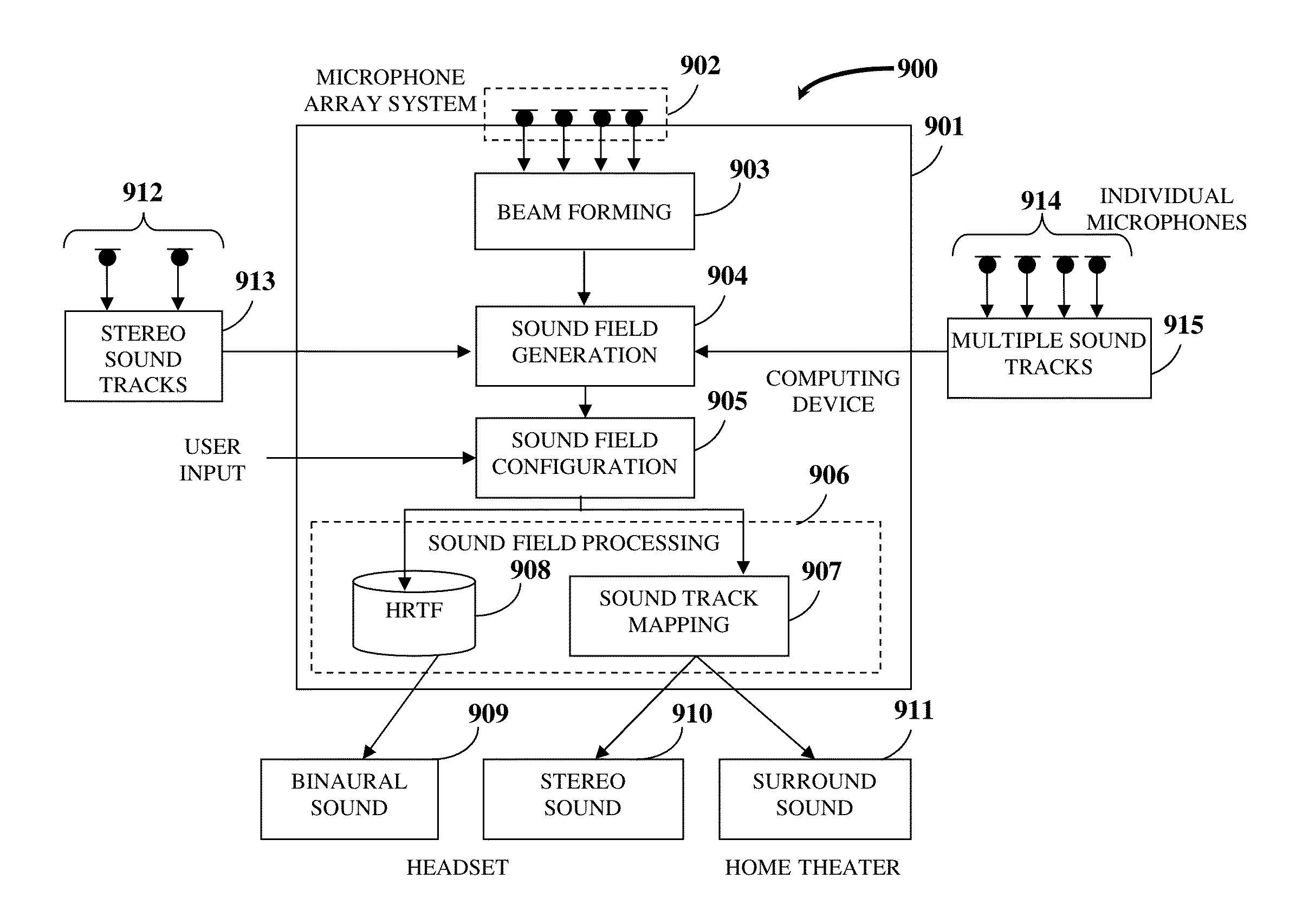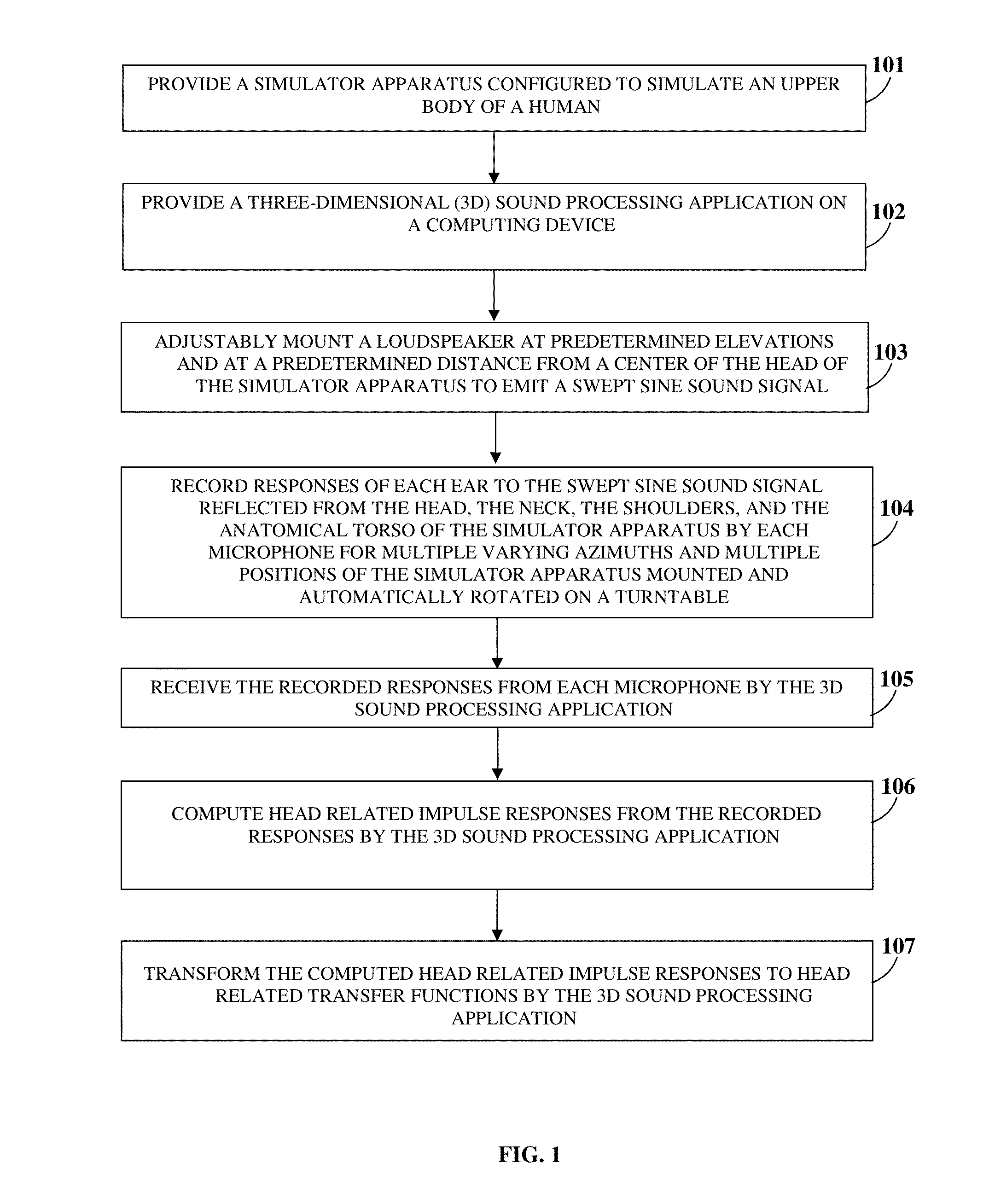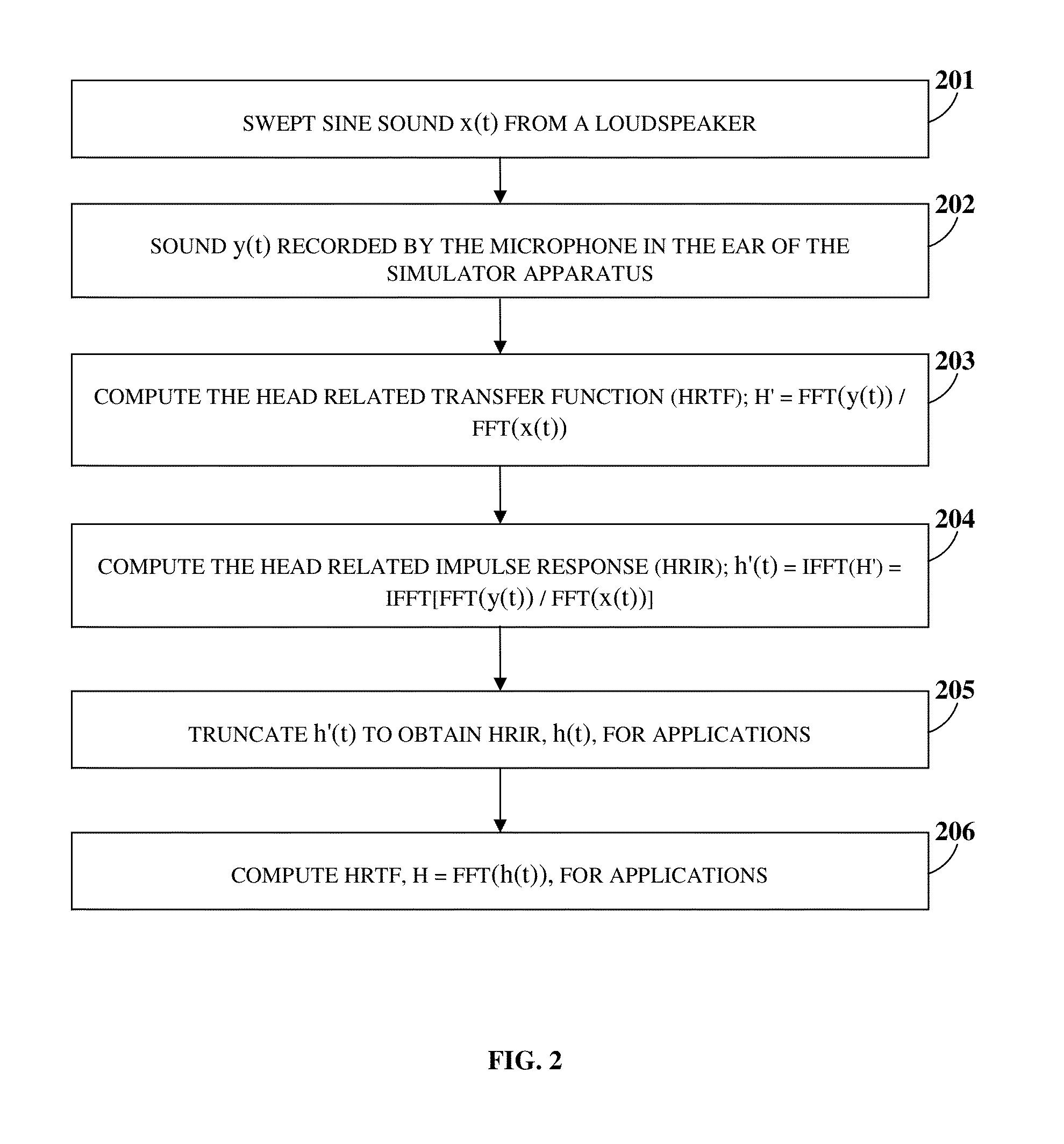Configurable three-dimensional sound system
a three-dimensional sound and sound system technology, applied in the direction of stereophonic arrangments, transducer details, electrical transducers, etc., can solve the problems of not being able to use a surround sound system, recording binaural sound cannot be modified or configured during reproduction, and the size of the human head simulator is too large to be mounted on a portable device,
- Summary
- Abstract
- Description
- Claims
- Application Information
AI Technical Summary
Benefits of technology
Problems solved by technology
Method used
Image
Examples
Embodiment Construction
[0066]FIG. 1 illustrates a method for measuring head related transfer functions (HRTFs) using a simulator apparatus and a loudspeaker. The method disclosed herein provides 101 a simulator apparatus configured to simulate an upper body of a human. The simulator apparatus comprises a head with detailed facial characteristics, ears, a neck, and an anatomical torso with full shoulders as exemplarily illustrated in FIGS. 3A-3C. As used herein, the term “facial characteristics” refers to parts of a human face, for example, lips, a nose, eyes, cheekbones, a chin, etc. The simulator apparatus is configured to texturally conform to the flesh, skin, and contours of the upper body of a human. The materials customized for the simulator apparatus comprise artificial soft skin and flesh for the entire exposed area, that is, the head and the neck. A microphone, for example, a pressure microphone is positioned inside each ear canal of each ear corresponding to the location of the ear canals of an a...
PUM
 Login to View More
Login to View More Abstract
Description
Claims
Application Information
 Login to View More
Login to View More - R&D
- Intellectual Property
- Life Sciences
- Materials
- Tech Scout
- Unparalleled Data Quality
- Higher Quality Content
- 60% Fewer Hallucinations
Browse by: Latest US Patents, China's latest patents, Technical Efficacy Thesaurus, Application Domain, Technology Topic, Popular Technical Reports.
© 2025 PatSnap. All rights reserved.Legal|Privacy policy|Modern Slavery Act Transparency Statement|Sitemap|About US| Contact US: help@patsnap.com



